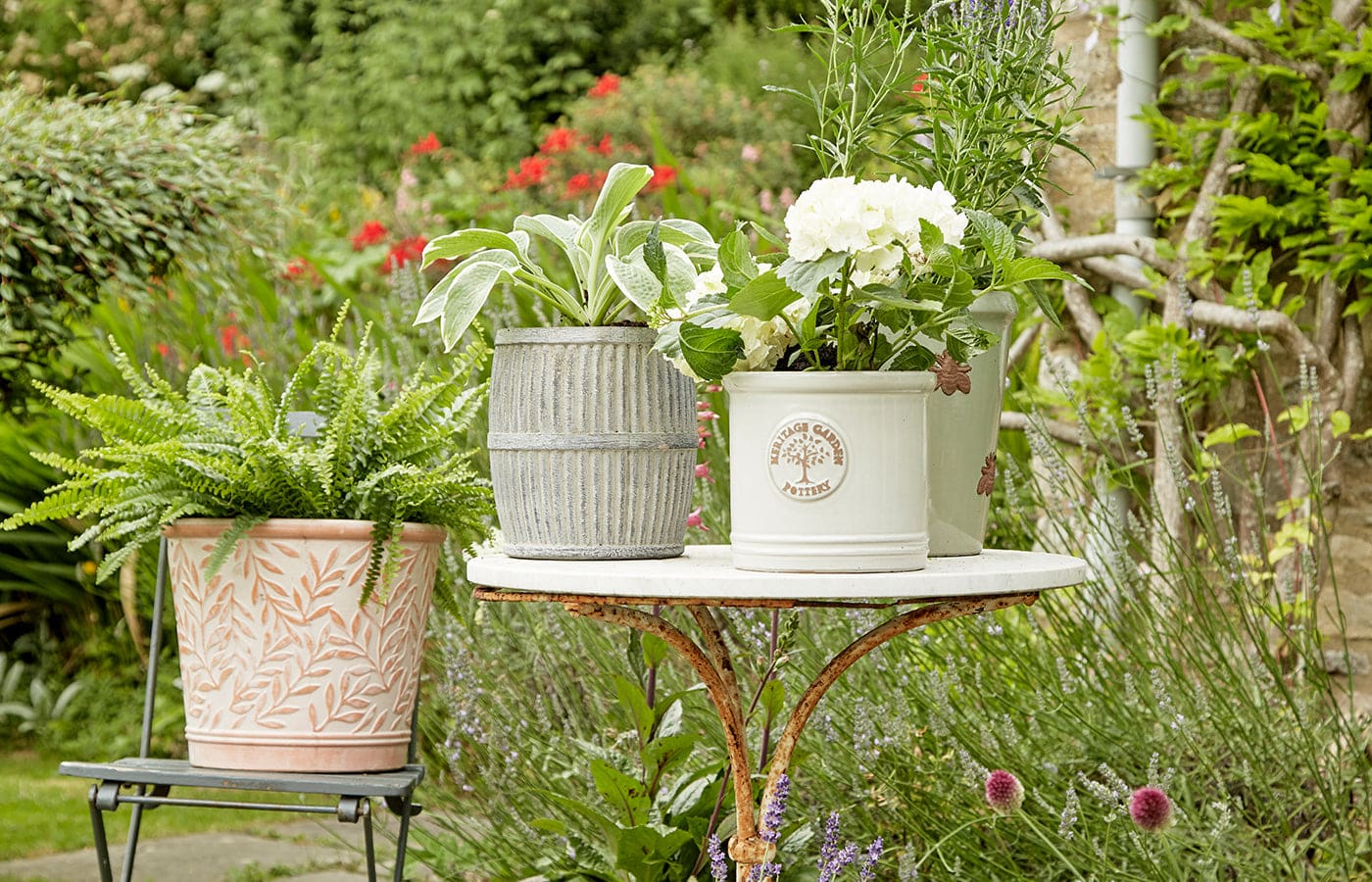Caring for Container Gardens in Cold Weather
- By Claire Hurst
- 18th November 2020

With frosts starting to make their first appearance as we head into winter, it's time to start thinking about plant protection now and how to care for your container garden so you're fully prepared for the next cold snap. Dropping temperatures can cause damage to roots or tender plants, while excessive rain can cause compost to become waterlogged. So, what can you do to ensure your container garden is protected over winter and thrives come spring?
Choose your container wisely
Cold weather can cause pots to crack, meaning not only do you have to replace the plant due to frost damage, you will have to replace the container too. Choose a pot that is frost proof – a glazed ceramic pot is a great example of a container that can withstand the elements. Lightweight containers made of plastic, fibreglass or wood are also ideal as they can be moved to different spots in the garden or inside for protection.
An essential accessory to use over winter are pot feet, which elevate the container off the ground. This ensures that any excess water can exit through the drainage holes in the bottom and not cause waterlogging. When waterlogged, a harsh cold snap can cause water to expand when it freezes, which can also damage or even break containers.
Group together
We recommend to group a number of pots together on soil that is close to your house or wall. Place the hardiest plants on the outside of the container cluster and place the less hardy plants in the centre. By doing this and placing the containers together, this greatly increases the mass and volume of insulation and protects the plants and containers from the cold, and harsh winds.
A cluster of containers can also act as an exciting focal point in the garden with evergreen shrubs such as box bushes and ferns providing lush green foliage and cornus’ vivid stems attracting attention with its winter colour and interest. These can be complemented by the planting of spring bulbs in containers that bring injection of colour following the long, dark days of winter.
Shelter tender plants
Plants that are not winter hardy like geraniums, fuchsias, verbena will need to be moved to a frost-free location during the cold spell. A cool greenhouse, porch or inside your house is ideal for overwintering.
Protective covers are a great way to keep your plants safe from the changing climate seasons and common garden pests. For protecting tender plants in your containers and hanging baskets, fleece is a popular choice as it not only acts as insulation against the colder climes, but also protects against wind and hail.
Larger pots that aren’t easily moved can be wrapped in hessian, fleece or bubble wrap to create a layer of insulation to prevent the root ball from freezing.
Watering
Even though the UK is notoriously known for its wet climate over winter, it is still important to water your container plants during any dry spells. Compost quickly dries out in mild temperatures and indoors, so it is advised that it is checked weekly to prevent plants and shrubs from drying out. Pay particular attention to evergreen shrubs and conifers which can become thirsty, whilst dormant plants can be watered sparingly.
Look out for pests and diseases
Even during the winter months, pests and diseases can rear their ugly heads and affect your plants. Vine weevil, fungus gnats and aphids can live in the soil and slow down or even hamper growth. If you do find such pests, remove the plant and discard the old compost. Then, repot, making sure foliage remains healthy and plentiful by removing any diseased leaves that may have dropped over time.
Slugs and snails can also prove a problem and can be tackled with copper rings which create an unpleasant electric shock to our slimy foes on containers.